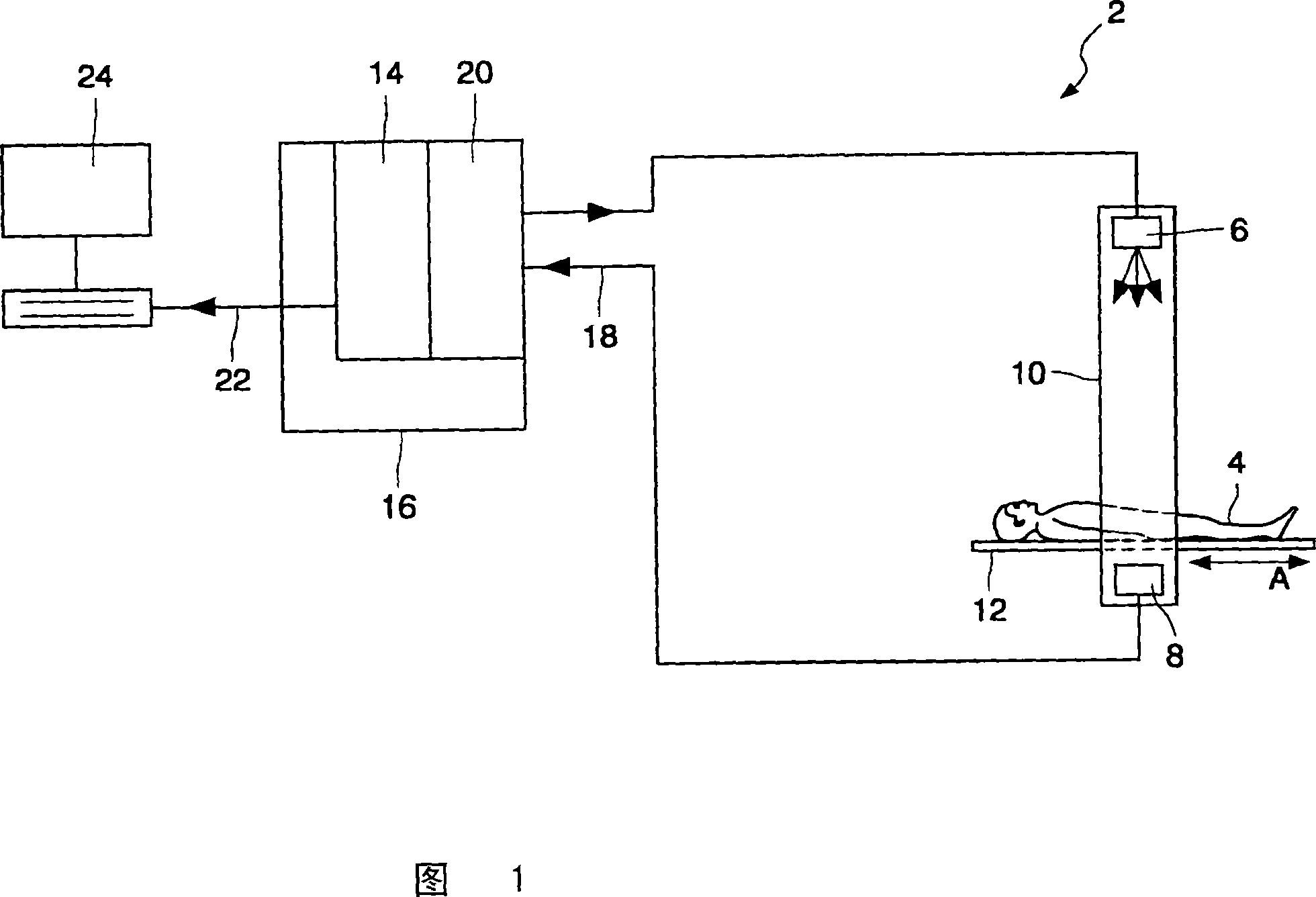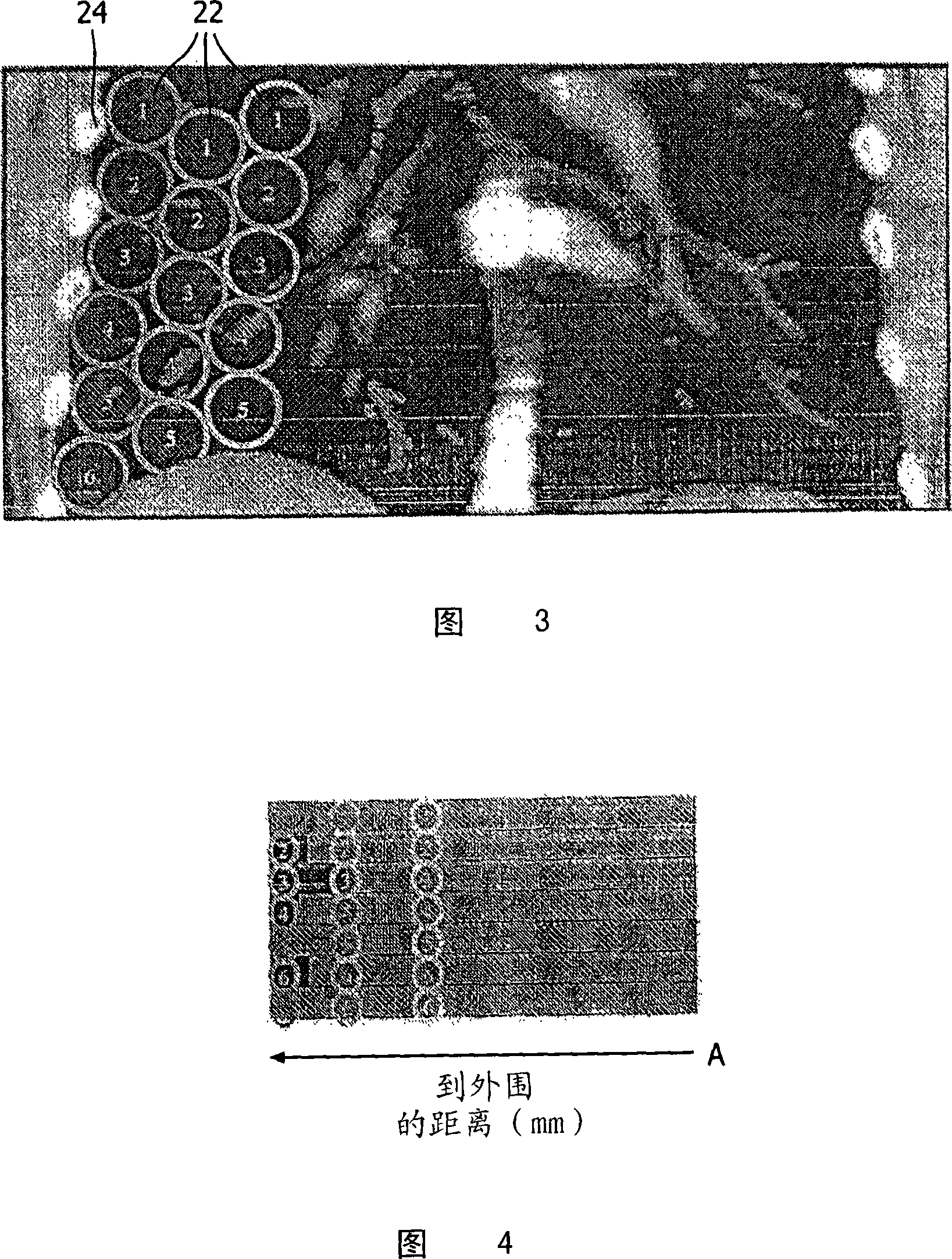Apparatus and method for providing 2D representation of 3D image data representing an anatomical lumen tree structure
An image data and tree structure technology, which is applied in image data processing, 2D image generation, 3D modeling, etc., can solve the problems of negative discovery, detection and processing failure of health status, user uncertainty, and difficulty in inspection, etc.
- Summary
- Abstract
- Description
- Claims
- Application Information
AI Technical Summary
Problems solved by technology
Method used
Image
Examples
Embodiment Construction
[0049] Referring to FIG. 1 , a computed tomography (CT) scanner apparatus 2 for forming a 3D imaging model of the chest cavity of a patient 4 has an array of X-ray sources 6 and detectors 8 arranged in source / detector pairs around a gantry. 10 in the usual circular arrangement. The setup is shown from the side in Figure 1, so only one source / detector pair can be seen.
[0050] The patient 4 is supported on a platform 12 which is movable in the direction of arrow A in FIG. 1 by suitable means (not shown) under the control of a control unit 14 forming part of a computer 16 . The control unit 14 also controls the operation of the X-ray source 6 and the detector 8 in order to obtain image data of the slice of the patient's body surrounded by the support 10, and the movement of the patient 4 relative to the support 10 is synchronized by the control unit 14 in order to establish a map of the patient's chest cavity. A series of images is typically a stack of 100 to 400 images.
[0...
PUM
 Login to View More
Login to View More Abstract
Description
Claims
Application Information
 Login to View More
Login to View More - R&D
- Intellectual Property
- Life Sciences
- Materials
- Tech Scout
- Unparalleled Data Quality
- Higher Quality Content
- 60% Fewer Hallucinations
Browse by: Latest US Patents, China's latest patents, Technical Efficacy Thesaurus, Application Domain, Technology Topic, Popular Technical Reports.
© 2025 PatSnap. All rights reserved.Legal|Privacy policy|Modern Slavery Act Transparency Statement|Sitemap|About US| Contact US: help@patsnap.com



